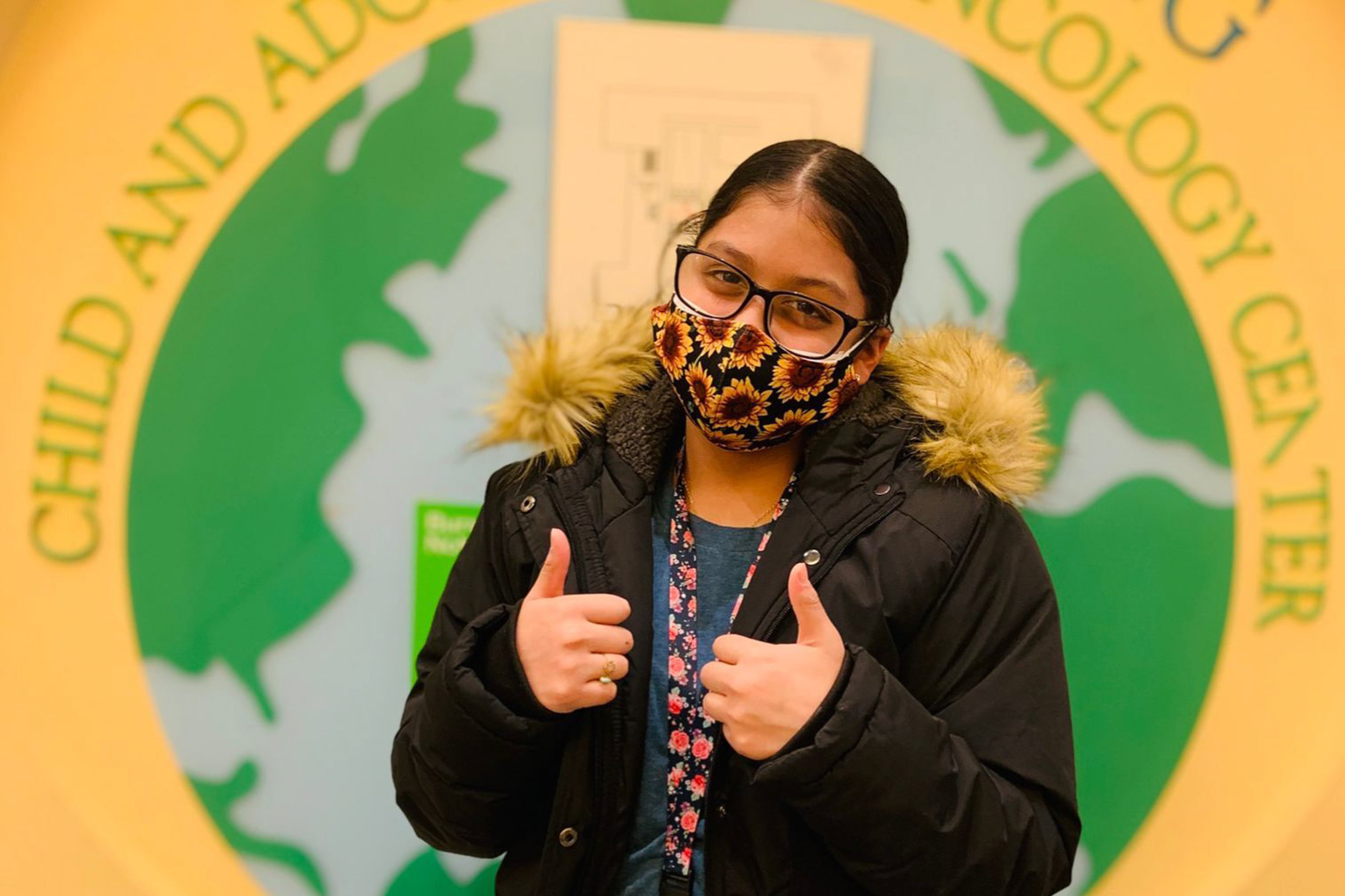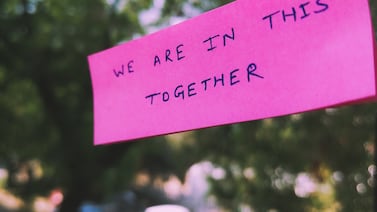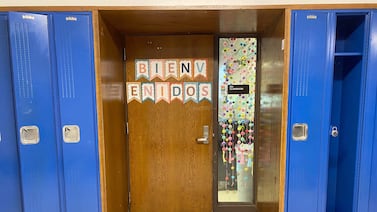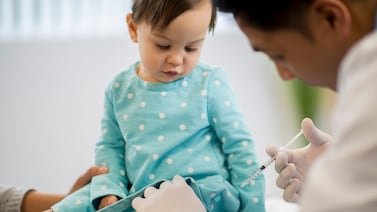Every day, Maria Villalobos makes difficult decisions in order to keep her 12-year-old daughter Zoey Nieves alive.
Villalobos elects to stay home instead of returning to her job at the car dealership, for example, sacrificing a primary source of income. And with the limited money that remains, she and her husband prioritize paying their phone and Wi-Fi bills over rent or utilities. They cannot risk losing contact with Zoey’s doctors.
In 2018, Zoey was diagnosed with alveolar rhabdomyosarcoma, a rare type of pediatric cancer that affects muscle tissue. For 18 months, Zoey was in and out of hospitals, where she received chemotherapy and had surgery to remove a cancerous tumor in the back of her left leg. She then had to relearn how to walk. Although Zoey has been cancer-free for two years, her white blood cell counts are still lower than normal, putting her at higher risk of getting severely ill from COVID.
Since the pandemic first erupted in New York City, the family, who resides in the Bronx, has painstakingly avoided contact with the outside world in order to protect Zoey. Her husband, who previously worked as an Uber and Lyft driver, and Villalobos both left their jobs; they started using their food stamps to order Amazon Fresh delivery instead of visiting the supermarket, and all three children learned remotely even after schools opened for hybrid instruction.
Come September, New York City public schools are set to fully reopen without a remote learning option, putting Villalobos back in the position of making a difficult decision. She says that if there is no remote option, she will pull her kids out of public school and homeschool them herself.
“I will get them the books; I will get them the curriculum. I will do everything I need to do to keep my children safe,” said Villalobos, who added that even though Zoey is vaccinated, she feels it would be unsafe for her to return to a classroom.
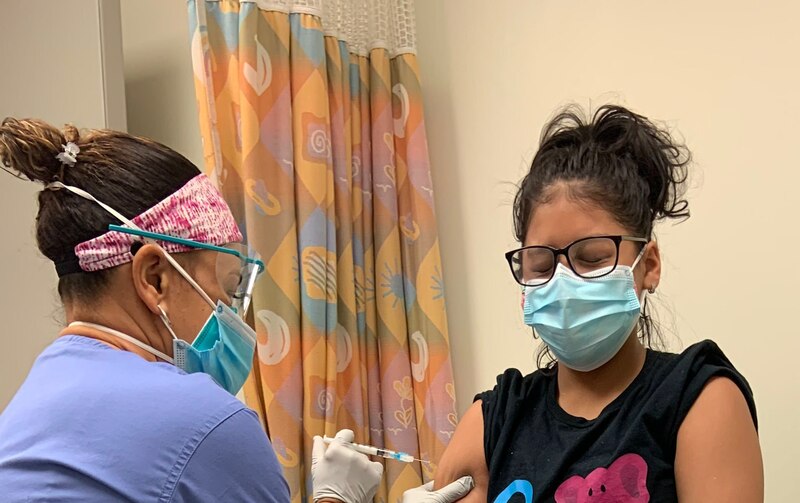
Though only seven weeks are left until schools reopen, Villalobos remains hopeful that district officials will change their minds and implement a remote learning option. Villalobos, the former vice president for the District 10 Community Education Council, is part of a vocal coalition of parents that has been pushing for remote learning for the past several weeks.
The group, called Bronx Parent Leaders Advocacy Group, has argued that parents should be given a choice on whether to send their children back to school. Many parents are still concerned about school safety, as the number of COVID cases has been rising and vaccination rates among eligible students remain low. Children under 12 do not yet qualify for the vaccines, and about 43% of New York City’s 12- to 17-year-olds have gotten at least one dose.
Earlier this month, the Bronx group held a roundtable discussion with Schools Chancellor Meisha Porter, who listened to the parents’ concerns and grievances. During the meeting, the coalition played a video, in which Zoey explained that she was immunocompromised and feared returning to classrooms.
In response, city officials indicated that students like Zoey would be accommodated.
“The points she raised are very valid,” said Daniel Stephens, deputy commissioner for family and child health at the city’s health department. “She is someone who would be encouraged to apply for an accommodation. We are really trying to meet the needs of all students.”
The accommodation Stephens was referring to is home instruction, an education department program for school-aged children who are temporarily unable to attend school in-person for medical reasons.
Across the city, an average of 1,300 students are in the program at any given time, according to education department officials. (Students can rotate in and out of the program as their health permits, so the total number of students participating in the program at any one time varies.)
The education department said it is aiming to return to an in-person delivery model for homebound instruction.
“As has been the case throughout the pandemic, all of our decisions are based on the health and safety of our students, and we will welcome back all students in September,” said education department spokesperson Danielle Filson. “Our home instruction program, which benefits a small number of children who are medically unable to attend school, will continue as it did pre-pandemic, and we will work with families to tailor the instruction based on the medical needs of each child.”
To Villalobos, home instruction, while safer than schools, is still risky. Although all NYC public school teachers will be required to either be vaccinated or tested weekly, Villalobos worries about any individuals entering the home and having close contact with Zoey.
“I still don’t feel 100% about having someone come into our home,” she said. “The instructor is visiting different homes throughout the day. I don’t know where they are going, how they are traveling, or if the other families they are visiting have been vaccinated.”
Even if Zoey qualifies for home instruction, it is unlikely that her two healthy siblings, one of whom is under 12 and therefore unvaccinated, will qualify for the program. Villalobos does not want her other two kids to go to school in person and potentially bring the virus into the home.
According to state regulations, elementary students who are eligible for home instruction are to receive a minimum of five hours of instruction per week, while secondary school students receive at least 10 hours of instruction each week.
Zoey received home instruction for several months after her cancer diagnosis. She said that during that time, she felt like she fell behind in her studies.
“I do not want to do home instruction again,” she said. “That was only five hours a week. With remote learning, I did two times or more than that.”
The likelihood of a remote learning option is dwindling, as Mayor Bill de Blasio and education department officials have repeatedly emphasized over the past several days that all students will be returning to class in person.
Villalobos has begun researching what homeschooling her three children would look like, and the challenges are numerous. Each of Villalobos’ children have different needs. The eldest is an honors student entering high school, while the youngest is a general education student starting middle school. Zoey, while in the same grade as her younger brother, has an IEP, or an individualized education program, so she needs additional services.
“For starters, where’s a lot of textbooks that need to be taken into consideration,” said Villalobos, adding that she found minimal resources about homeschooling online. “You’re basically out on your own.”


